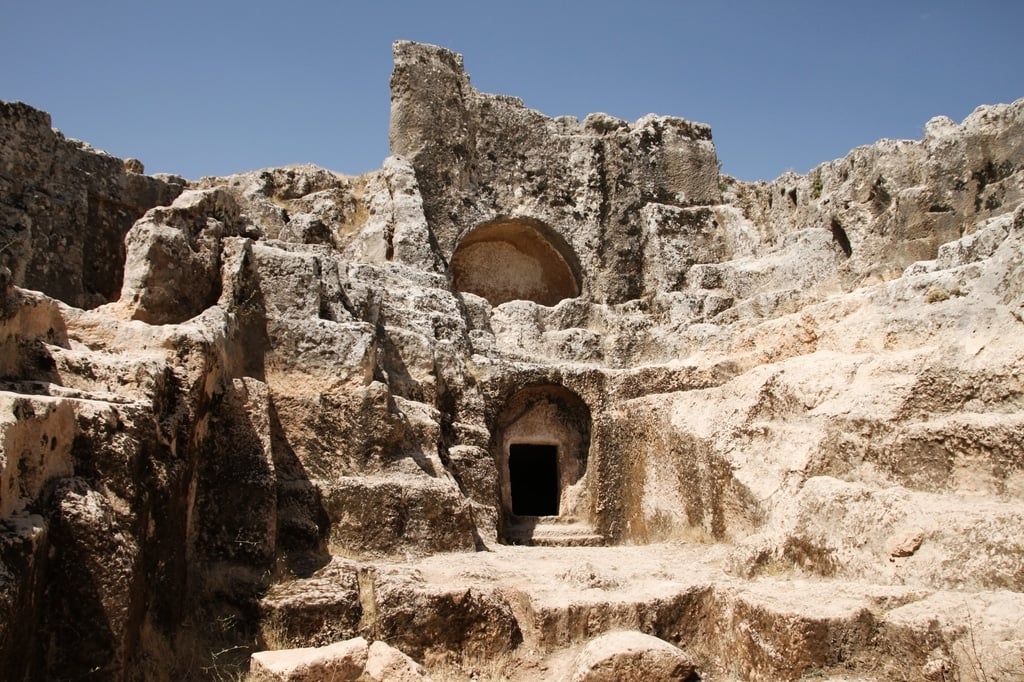

A massive floor mosaic with optical illusions dating back to the fifth century A.D. is once again in the spotlight as conservation efforts resume in the ancient Greek city of Perre (Greek: Πέρρη), one of the five major centers of the Greco-Persian Kingdom of Commagene.
Covering 125 square meters, the mosaic was first uncovered in 2009 during archaeological excavations at the site of a Late Roman basilica. Since its discovery, it has stood out for its immense scale and intricate design, attracting the attention of both scholars and visitors.
Adıyaman’da bulunan Perre Antik Kenti’ndeki MS 5. yüzyıla tarihlenen 125 metrekarelik mozaikte temizlik ve konservasyon çalışmaları yapılıyor.
Mozaik, 2021’de Kültür ve Turizm Bakanlığı Gaziantep Restorasyon ve Konservasyon Bölge Laboratuvarı Müdürlüğü tarafından restore… pic.twitter.com/wJkDo2JOEa
— arkeolojihaber ® (@arkeolojihaber) May 30, 2025
Unlike the typical Roman mosaics that feature animals such as lions or deer, the Perre mosaic showcases three-dimensional cube patterns that resemble modern optical illusions. These motifs are surrounded by geometric shapes and symbolic figures believed to reflect the spiritual ideas of the period.
“This 1,500-year-old floor mosaic is unlike the traditional ones,” said Mehmet Alkan, director of the Adiyaman Museum. “Its abstract motifs emphasize the importance of the structure it once adorned—a 5th-century basilica.”
The design is a series of cube-like patterns that create a striking visual effect, giving the illusion of depth. The artistic approach, according to Alkan, points to the creativity and innovation of ancient craftsmen.
Perre Roman Mosaic – Adiyaman
The 1500 year-old Perre mosaics, which bear traces of the Roman period, are one of the largest mosaics in a single piece.
The 155-square-meter mosaic was found in 2009 in Perre, one of the five major cities of Commagene Kingdom — a border kingdom… pic.twitter.com/f3svarc0OC
— Archaeo – Histories (@archeohistories) December 15, 2024
“It mirrors today’s optical illusion styles, suggesting the artisans were highly skilled and innovative,” he said.
A major restoration project was completed in 2021 by the Gaziantep Regional Laboratory of Restoration and Conservation, working under the auspices of the Ministry of Culture and Tourism. However, the effects of time and exposure to the environment have led to the need for renewed conservation.
Teams from the Adiyaman Museum Directorate are now carrying out delicate cleaning and stabilization work to preserve the surviving sections of the mosaic. Once the efforts are finished, the mosaic will be reopened for public viewing.
“This is one of the largest single-piece floor mosaics discovered in the region,” Alkan noted. “It covers an original area of 155 square meters, of which 125 square meters has survived intact.”
Visitors to Perre often view an introductory documentary at the site entrance before exploring the ruins. The mosaic is a highlight of the visit, drawing crowds who linger to study its craftsmanship and preserved condition.
“This artwork is not only a testament to the architectural and artistic mastery of the Late Roman period but also a key cultural attraction for Adiyaman,” Alkan said.
As more findings emerge from the ancient cities of the Kingdom of Commagene, the Perre mosaic stands as a vivid reminder of a time when geometry, symbolism, and design came together in lasting form.
